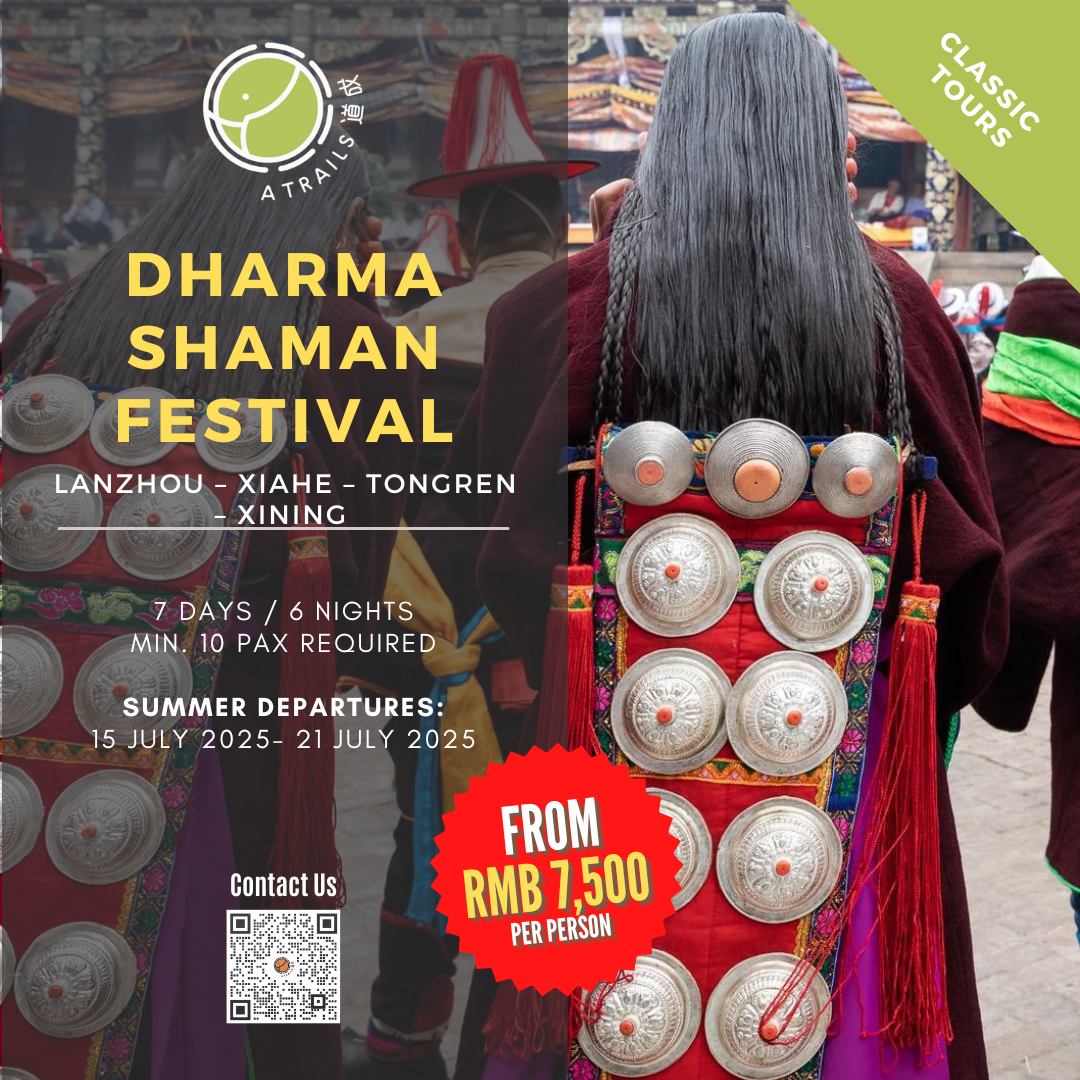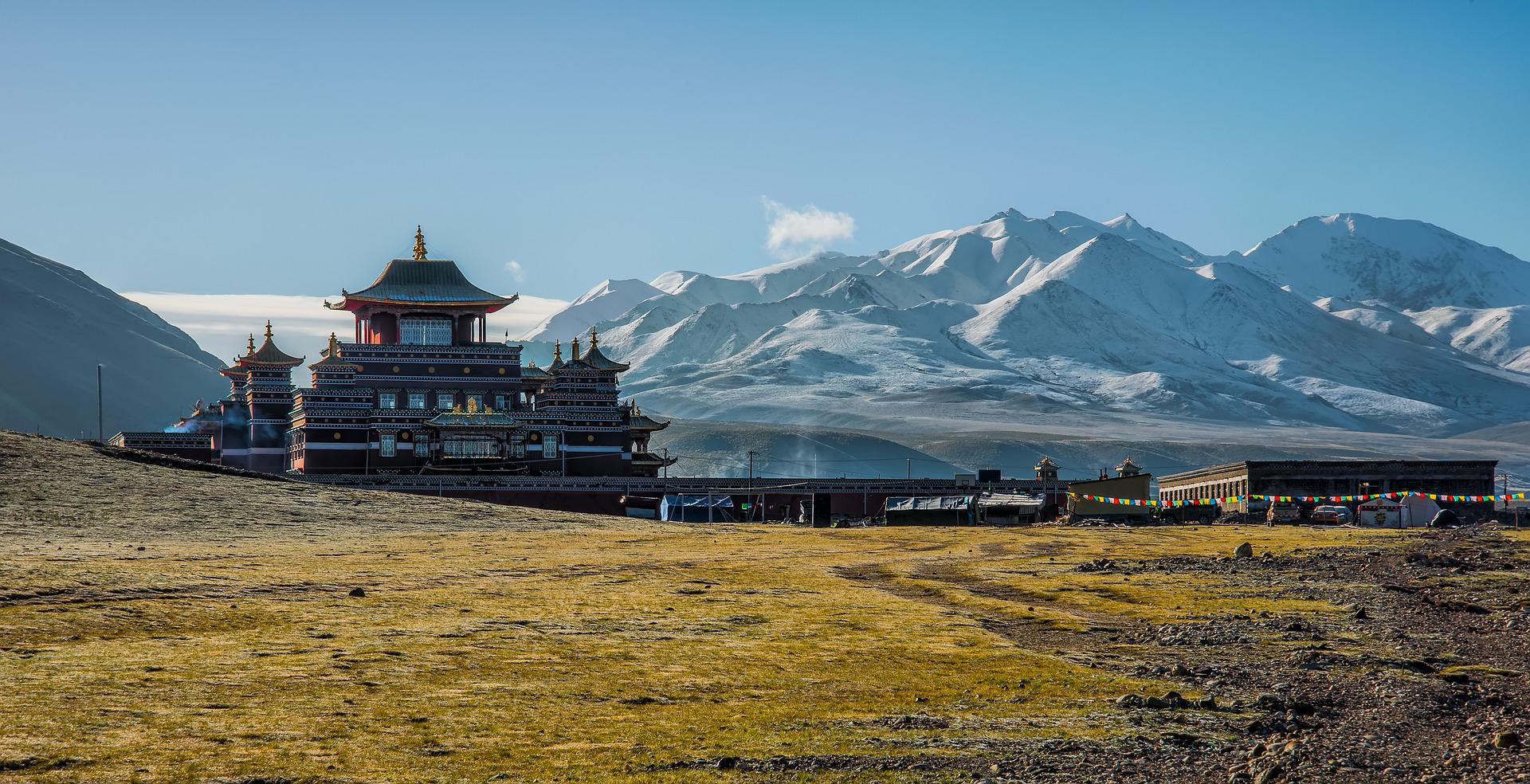 In Qinghai’s remote highlands, young men pierce their flesh to channel ancient gods—and travelers witness China’s most authentic spiritual theater
In Qinghai’s remote highlands, young men pierce their flesh to channel ancient gods—and travelers witness China’s most authentic spiritual theater
The steel needle slides through Tenzin’s cheek with a sound like silk tearing. Blood trickles down his chin, but his eyes have rolled back, revealing only white. Around him, drums thunder while juniper smoke swirls through the crowd. This is the Regong June Festival—where the line between human and divine dissolves in Asia’s last authentic spiritual spectacle.
At dawn in the Tibetan village of Gasari, grandmother Dolma kneads barley flour for the day’s feast. Today, her grandson will attempt to become a vessel for the gods—a tradition that has outlasted empires, revolutions, and modernity itself.
“When the gods come,” she tells me, weathered hands never pausing, “you will know. The whole valley changes.”
By noon, this farming community of 800 has transformed into something otherworldly. Prayer flags snap like trapped lightning. Tibetan horns echo off canyon walls. The air thrums with burning juniper—so thick it seems to alter consciousness.

China’s Only Religious Fusion Zone
Welcome to Regong, “the golden valley where dreams come true.” Hidden in Qinghai’s mountains, this collection of 23 villages harbors one of the world’s most remarkable cultural survivals: the only place where Buddhism, ancient shamanism, Daoism, and spirit worship don’t just coexist—they amplify each other.
Unlike Tibet’s sanitized tourist festivals, Regong remains stubbornly authentic. No souvenir stalls, no tour buses, no concessions to Western sensibilities. This is humanity’s oldest spiritual technology, still operational after 1,400 years.
“Nowhere else will you see Buddhist monks blessing shamanic possession rituals,” explains Dr. Lobsang, shouting over ceremonial drums. “This is the only surviving complete religious synthesis in China.”
The Sacred Energy Source
The festival’s power lies in its sacred geography. At Gasari’s center stands the Taklung Laptse—a stone cairn hiding a treasure chamber six feet underground, packed with Buddhist statues, Bon ritual objects, and precious metals. This spiritual bomb allegedly channels divine energy into anyone brave enough to receive it.
Young men like Tenzin spend weeks preparing—fasting, meditating, bathing in the icy Longwu River. When the moment comes, they grab wooden arrow poles thrust into the cairn and wait for gods to arrive.
The transformation is electric. Tenzin’s body shakes. Eyes roll back. Someone hands him a steel needle, and without hesitation, he drives it through both cheeks. The crowd gasps, but Tenzin feels nothing—he’s no longer entirely human.
“The body becomes a house for the divine spirit,” explains village elder Sonam. “What we see isn’t Tenzin anymore—it’s Amne Taklung, the mountain god.”

When Humans Become Gods
What follows defies categorization. The possessed young men begin dancing feats that would challenge Olympic athletes—leaping impossibly high, spinning for minutes without stopping, performing supernatural endurance tests.
The Lha Sho (God Dance) opens each day with painted drums announcing divine arrivals. Bodies undulate like serpents in the Le Sho (Dragon Dance), embodying water spirits crucial to survival. The Mo He Ze (War Dance) recreates ancient battles—not historical reenactment, but active mythology where past lives in present tense.
Women perform their own divine communication through the Gar dance. Unmarried women in coral necklaces and silk brocades move with meditative grace, their elaborate headdresses—some weighing ten pounds—transforming village girls into earthly goddesses.
“We don’t just wear these clothes—we become the goddesses,” explains 20-year-old Yangchen, adjusting her grandmother’s 200-year-old silver ornaments.
Journey into the Sacred
The festival demands more than typical tourism preparation. At 2,500-meter altitude with intense spiritual atmosphere, it requires visitors prioritizing transformative experience over comfort.
The three-hour drive from Xining traverses landscapes shaping Tibetan imagination for millennia. During festival season (July 15-25), the entire valley becomes extended community celebration. The most meaningful experiences occur through homestays, witnessing how the festival integrates with daily life.
Standing in Gasari at sunset on the final day, watching possessed young men return to normal consciousness, it becomes clear why this remote valley draws spiritual seekers worldwide. In an age when authentic cultural experiences are increasingly rare, Regong offers something invaluable: a window into how humans have created meaning for millennia.
For those willing to endure thin air and basic accommodations, Regong offers experiences no museum can provide. It’s where dreams literally take physical form, ancient wisdom remains vibrantly alive, and the barrier between sacred and secular dissolves in high mountain air.
The festival continues not for tourism revenue but because these communities believe their well-being—and the world’s—depends on maintaining ancient connections. For respectful visitors, witnessing this dialogue between human and divine offers education in cultural authenticity among travel’s most profound possibilities.

